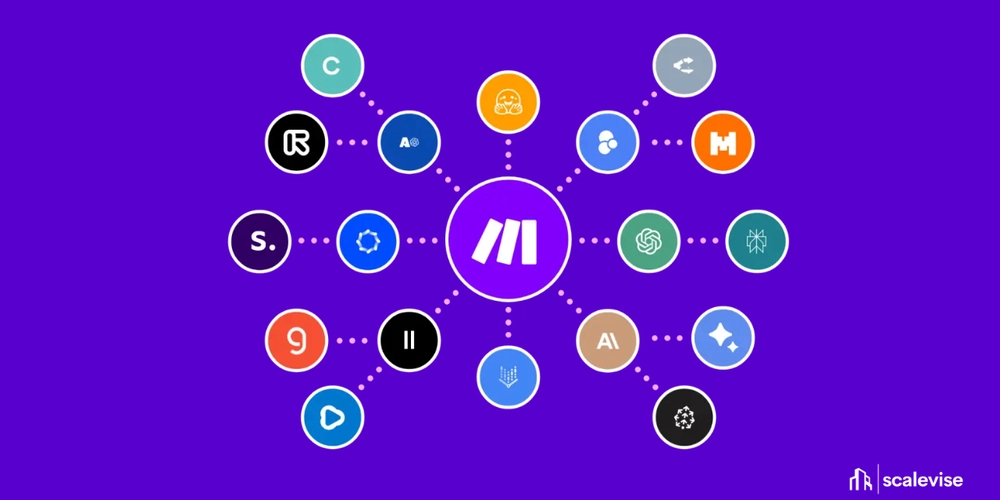Ever since Make.com introduced its new credit-based pricing model, developers have been raising eyebrows. What used to be straightforward operations-based billing is now a more abstract system tied to “credits” — and it’s affecting how we build, scale, and optimize our workflows.
In this breakdown, we’ll cut through the marketing and help you understand:
- How the new credits system actually works
- What counts as a “credit-consuming” action
- How to optimize your scenarios to save money
- Whether you’re now paying more than before
🧮 From Operations to Credits: What’s Changed?
Here’s the TL;DR:
| Feature | Old Model (Operations) | New Model (Credits) |
|---|---|---|
| Billing | Per Operation | Per Credit |
| Modules | Mostly 1 op per module | Can be multiple credits |
| Pricing | $9 for 10,000 ops | $9 for 1,000 credits |
| Transparency | Easy to estimate | Complex and variable |
| Dev Impact | Predictable | Requires credit cost audits |
Let’s translate this to real-world dev work. Suppose you run a basic automation with 100 steps (modules) per run.
- Old system: 100 operations = 100 units from your quota.
- New system: 100 modules may now cost 150 to 200+ credits, depending on API call complexity, data size, external services, and number of records processed.
For example:
- HTTP call = 1 credit
- Iterator processing 1,000 records = 1,000 credits 😬
- AI/ML modules or custom code = more than 1 credit each
🔍 Real Impact: What You Need to Know
Scenarios with big loops now cost more
If your scenarios use Iterators, Aggregators, or APIs returning lists, each individual item can consume a separate credit.
HTTP, Webhooks, and External APIs are more expensive
Expect even simple webhook-based triggers or external data pulls to consume 1–3 credits per call.
No longer predictable
You now need to simulate or test runs to know how much credits will be burned per scenario.
🔧 How to Audit Credit Usage (Properly)
To check per-scenario credit usage:
- Open any scenario
- Run it in Debug mode
- View the “credits consumed” in the run summary
Repeat this weekly for your most critical automations.
You can also check:
- Organization usage breakdown (go to Subscription > Usage)
- Per-scenario analytics via Logs > Executions
- Use tags like
env:prod,env:testto isolate noisy flows
💡 Optimization Tips for Developers
Here’s how to lower credit usage while keeping workflows intact:
1. Minimize Iterators
- Use filtering APIs instead of returning full datasets
- Paginate manually where possible
- Avoid iterating through large Airtable or Notion lists
2. Group API Calls
- Combine multiple API fetches into a single call
- Move more logic into external apps (serverless, etc.)
3. Switch to Routers + Filters
- Use conditional logic to avoid unnecessary module runs
4. Cache Frequently Used Data
- Don’t fetch the same external data every time
- Store key metadata in Data Stores or external caching layers
🛠 Example: Credit-Efficient Data Sync
Use Case: Sync new Shopify orders to Airtable
Naive Setup:
- Shopify Watch Orders (1 credit)
- Get Order Details (1 credit)
- Get Line Items (1 credit)
- Iterator (10 orders = 10 credits)
- Create in Airtable (10 records = 10 credits)
Total: ~23 credits per sync
Optimized Setup:
- Fetch orders in bulk
- Skip iterator via JSON transformation
- Use batch Create Records in Airtable
New Total: ~4–6 credits per sync
❓ Is Make.com Still Worth It?
For developers building production-grade automations, Make.com remains powerful, flexible, and fast.
But the new credit system means:
- You pay more if you don’t optimize
- You need to audit your scenarios regularly
- You need technical workflows, not just visual ones
If your credit usage is exploding, it’s time to review every scenario. At Scalevise, we help teams optimize their Make setup to avoid surprises and keep costs in check.
🧠 Bonus: When to Switch to Custom Middleware
If you’re hitting 10K+ credits/month and using Make as a backend engine — consider moving parts of your stack to:
- Node.js APIs
- Background workers (e.g. cron + Redis)
- Self-hosted automation agents (Make + OpenAI + webhook)
We’ve done this for several clients: they start with Make, then offload compute-heavy logic to scalable backend code — with Make as a control layer.
✅ TL;DR for Devs
- The new Make.com credit model is more granular but less predictable
- Iterators and loops are credit eaters
- You now pay for complexity, not just module count
- Optimization = fewer surprises
- Think hybrid: use Make + custom backends
Need Help Optimizing Your Scenarios?
At Scalevise, we help businesses:
- Audit and reduce Make.com credit usage
- Migrate to hybrid or fully coded automations
- Build fast, scalable, AI-enhanced workflows
📩 Book a free consult: scalevise.com/contact



